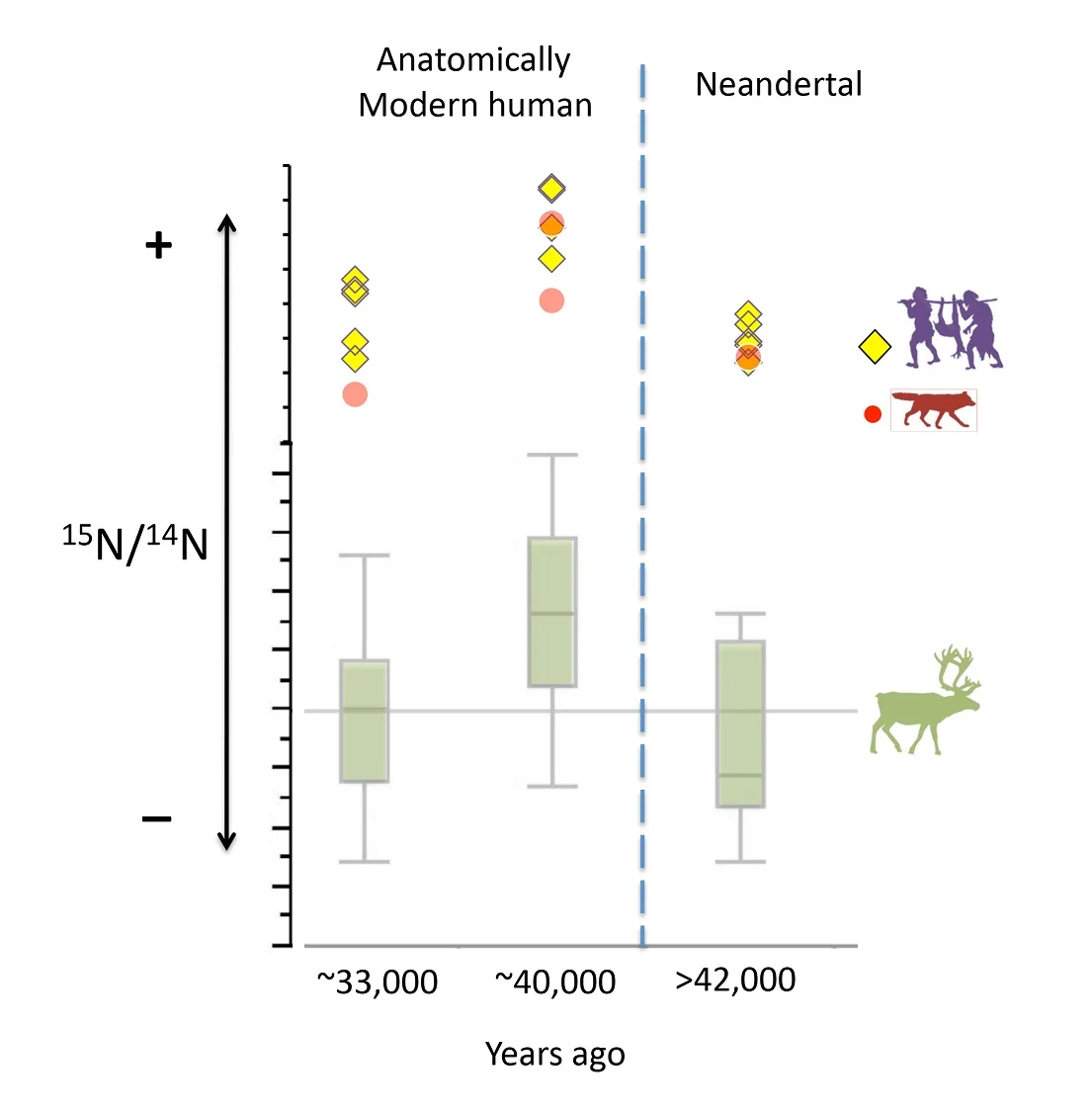Why were Neanderthals replaced by anatomically modern humans around 40,000 years ago?
One popular hypothesis states that a broader dietary spectrum of modern humans gave them a competitive advantage on Neanderthals. Geochemical analyses of fossil bones seemed to confirm this dietary difference.
Indeed, higher amounts of nitrogen heavy isotopes were found in the bones of modern humans compared to those of Neanderthals, suggesting at first that modern humans included fish in their diet while Neanderthals were focused on the meat of terrestrial large game, such as mammoth and bison.
However, these studies did not look at possible isotopic variation of nitrogen isotopes in the food resource themselves. In fact, environmental factors such as aridity can increase the heavy nitrogen isotope amount in plants, leading to higher nitrogen isotopic values in herbivores and their predators even without a change of subsistence strategy.

A recent study published in Journal of Human Evolution by researchers from the University of Tübingen (Germany) and the Musée national de Préhistoire in Les Eyzies-de-Tayac (France) revealed that the nitrogen isotopic content of animal bones, both herbivores, such as reindeer, red deer, horse and bison, and carnivores such as wolves, changed dramatically at the time of first occurrence of modern humans in southwestern France.
The changes are very similar to those seen in human fossils during the same period, showing that there was not necessarily a change in diet between Neanderthals and modern humans, but rather a change in environment that was responsible for a different isotopic signature of the same food resources.
Moreover, this isotopic event coinciding in timing with the replacement of Neanderthals by modern humans may indicate that environmental changes, such as an increase of aridity, could have helped modern humans to overcome the Neanderthals.
These new results, together with recently published research showing that Neanderthals had more skills and exploited more diverse food resources than previously thought, makes the biological differences between these two types of prehistoric humans always smaller. In this context, the exact circumstances of the extinction of Neanderthals by modern humans remain unclear and they are probably more complex than just a behavioral superiority of one type of humans compared to the other.
Header Image : Fragment of jaw of a wolf from Le Moustier that was analyzed during the investigation. Photo: Hervé Bocherens/University of Tübingen.
Contributing Source : Universitaet Tübingen






